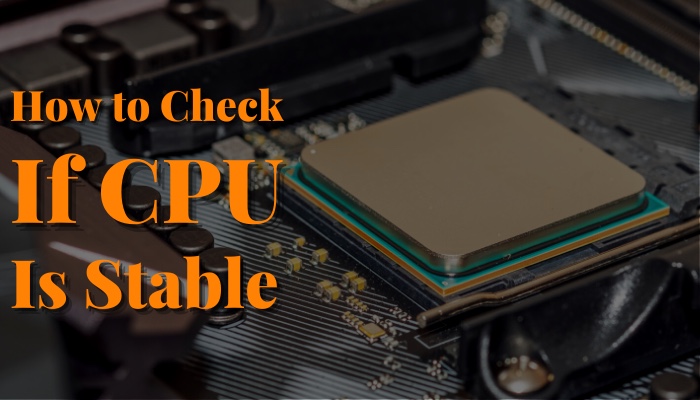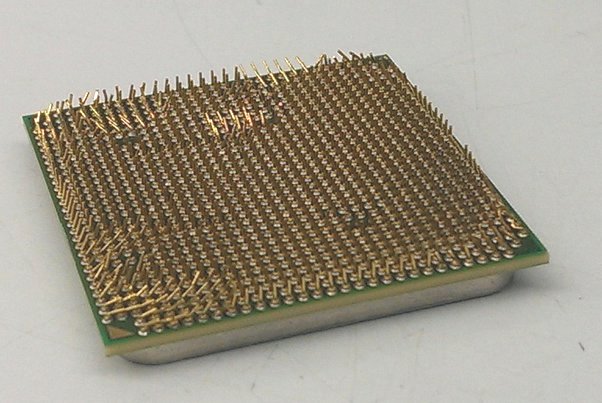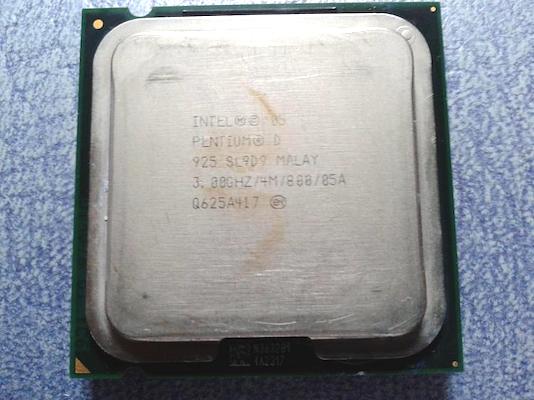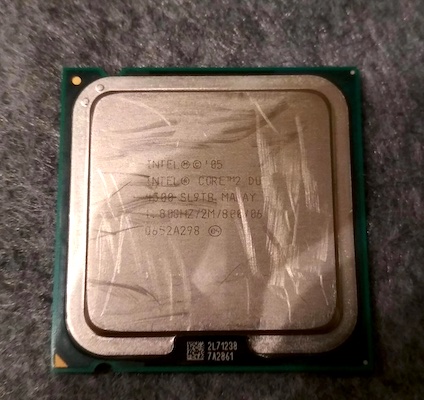Like the heart of our body, a CPU is the nucleus of a PC. As the heart pumps the blood with a rhythm, we stay healthy. Our whole body will collapse if the beat misses the sync.
Similarly, if the processor becomes unstable, you will encounter critical issues when running a computer. So ensuring the chip’s stability is crucial.
In this article, I will guide the ways of identifying CPU stability & why it can fail with possible solutions. Let’s dive in.
How to Check if a CPU is Physically Good Before Stability Check
You can buy a brand-new CPU from Amazon to Overclock, or a 2nd-hand chip from eBay. But, before a stability test, it is a sensible approach to examine the chip physically. So that, you can rule out a physically defective chip before spending hours on stability checks.
A precaution before physically inspecting a CPU is, NEVER touch the CPU pins or pads.
Here are some factors to focus whether a CPU is damaged from the outside or not:
- Processor pins: CPU pin bending is pretty common for AMD users, as they used PGA (Pin Grid Array) type processors. Though, they switched to LGA types from Zen 4 architecture. For Intel users, they don’t face this often.To identify the bending pins, look closely at the rows of pins from the edges of the chip. Find out if any pins are deformed. Also look for any missing pins, as they can easily be overlooked due to the density of the pins.

- CPU pads: Though Intel users don’t face CPU bending, they have a risk of putting the CPU pad in danger. If the CPU is handled carelessly & touched on the bottom pads, it can settle dust or oil, which will prevent proper contact with socket pins.If there are any damage traces, it can fail to boot up. Use a thermal surface purifier to clean the visible leftovers. But if the pad gets seriously damaged, don’t try to use it.

- Burn mark: Check for any dark or brown burn marks on the CPU. If there is any, it indicates a former serious overheating issue or a result of failed OC. If you notice any type of discoloration, you should avoid the CPU.

- Surface condition: The metal part that contacts with the cooler is called IHS & helps to shift the heat. If this part gets some scratches or marks, it means the chip got attached to the cooler & the previous owner tried some tools to remove it.Some extreme overclock enthusiast tries to delid the metal part to improve the cooling system. But it’s a risky process & if there is any indication of removing the IHS part, you should stop right there.

Now, you know your CPU is not physically damaged, it’s time to check its stability with some stress testing. To do so, read along.
How to Test if CPU is Stable on PC
To check the processor’s stability, you require stressing the CPU. Before the stress test, make sure all the components are running ok. You need to reset any type of overclock for CPU, RAM, or GPU.
Now, you need some monitoring software to check CPU temperature, voltage & usage. You can use HWiNFO64 or HWMonitor to track down the sensors.
Here are the ways to check if the CPU is running stable:
Prime95
For the CPU stability test, Prime95 is the most reliable software. The software finds the largest prime number with the help of the CPU & thus puts a maximum load on the chip.
Prime95 has 4 different types of options to torture the processor. For only CPU stress, we will use the Small FFTs option. This option triggers the CPU to consume max power wattage & as a result, it reaches the max temp within a short time.
Follow the steps below to find stability by torturing the CPU with Prime95:
- Download the latest Prime95 from an authentic site.
- Run the app as an administrator by right-clicking.
- Select Small FFTs from the pop-up box.
- Hit OK & the stress test will begin.
Run the software for 1hr for the initial stability test. Look at the CPU Vcore, temp & usage sensor from the monitoring software. Turn off the test, if you detect any high voltage or critical temp.
In case you’re wondering whether these CPU temp readings can be wrong or not, read the linked article.
If everything runs fine, choose the Blend option from the torture test. If you don’t want to restart the app after stopping the test; Go to the Option tab, then Torture Test. & finally, select the Blend option.
Continue the test for another 23 hrs. If it passes the test, you can say your CPU is totally stable.
Continue the test for another 23 hrs. If it passes the test, you can say your CPU is totally stable. In case you notice the CPU temps fluctuating, follow the embedded article to fix it ASAP.
Cinebench R23
Another great app to check the stability by stressing is Cinebench R23. Besides the stability test, you can compare your CPU scores with tech reviewers to know about the CPU’s performance. Because most reviewers use this software as a benchmark reference.
With a continuous 3D scene loop, this app stresses the chip to its limit. Thus, you can find your processor’s capability within a short time. The app has two advanced options; 10 min & 30 min test. Usually, I use the 30-min test to quickly check the CPU stability.
Here are the steps to check CPU stability with Cinebench R23:
- Download & launch the software.
- Select the File option.
- Tick on Advanced benchmark.
- Select 30 minutes (Test Stability) from the Minimum Test Duration.
- Click on Start.
This will start the loop & stress the CPU. After 30 min, it will show the benchmark scores. If the app doesn’t crash & pass the test, you can say the processor is stable.
There is some other stress testing software like OCCT, AIDA64 Extreme, CPU-Z, etc. You should not rely on only one software & verify the stability with at least two software. Because one of my friends tested short stress with one app & when it passed, he hopped on gaming without further checking.
But his CPU was not stable at that moment due to improper BIOS settings & he didn’t notice it. As a result, his PC crashed during a Ranked match & got an abandoned sanction. So, what can cause one stability test to pass & another one to fail?
Fear not. Continue reading to know the facts. Also, check out our detailed guide on CPU temperature.
Why Does the CPU Get Thermal Throttled & Fails Stability Test?
During the stress test, if your processor gets too hot to handle its operation, it will become unstable. In that case, the stress test will show errors or shut down the system to save the CPU from overheating.
So, why is the CPU thermal throttling?
Here are some most logical reasons to fail the stability test for thermal throttling:
- Insufficient cooler: If the cooling system doesn’t meet the TDP of the CPU, that means, it will fail to spread the heat quickly. Depending on the CPU, you will need an adequate after cooler in this case to avoid thermal throttling.
- Lack of airflow: Every PC casing has some ventilation system. But If you don’t install any case fans or don’t ensure enough airflow to the components, it will circulate the hot air inside the casing, which will raise every component’s temp. So make sure you have installed enough casing fans & clean the fans to ensure proper airflow. A positive airflow will intake more fresh air into the casing. So, try to install an extra intake fan than an exhaust fan.
- Thermal paste: If there is not enough thermal conductivity between the CPU & cooler’s heat sink, the cooling system will not be able to scatter away the heat, even if it’s a beefy cooler. Cleaning & repasting new thermal paste is crucial to maintain the cooler’s efficiency. After taking off the heat sink from the CPU, use isopropyl alcohol to clean the paste’s residuals. Then apply a pea-sized new thermal paste in the middle of the chip & reseat the heat sink properly after cleaning the dust.
- BIOS settings: Some BIOS have a zero fan option, which can take time to ramp up the speed. This can cause high temp in a minute & fails the test. Disabling power saving options will also increase power consumption & raise the CPU temp.
In that case, you can enable all the power-saving options such as C-states, EIST, Cool’n’Quiet, etc. Also, undervolting is another safe option for reducing heat. But do this with caution, as too low voltage will not let you boot.
FAQs
How to fix high CPU Usage?
You can face high CPU utilization for various reasons. Rebooting the computer, closing background applications, checking for malware, or using a balanced power plan can help to fix high processor usage.
How hot is too hot for a CPU to become unstable?
If the processor gets above 85° C, it will start to throttle. If the chip reaches 95°, the system will shut down to protect the CPU.
How do I know if my CPU is unstable without stress testing?
You will face random crashes, freezing, gaming performance lag, etc. if your CPU is not stable.
Final Thought
Ensuring stability is crucial because it can hamper any important work by crashing or freezing the system.
Maintaining proper thermal range will increase the efficiency of the CPU. Besides stress software, playing games or heavy productivity workloads can also ensure stability. But a stress test software failure will not do much, whereas, in a game, a rank crash can sanction you for hours.
In this article, I guided the proper steps to the stress test for stability check. If you get thermal throttled, there are possible solutions too. If you have further queries, don’t hesitate to come back & leave a comment.




